Best Used Car, Services, Auto Parts, Rent Car Available for Buy and Sell Near By Go Ahead
- महिंद्रा मिनी ट्रैक्टर - कीमत, मॉडल, और सुविधाएँ
- Swaraj Price 2025: Latest Swaraj Tractor Price List and On-Road Rates in India
- Best Tractors in India 2025: Top 10 Picks for Every Farm Size
- Swaraj 855 FE Tractor Review 2025 Features, Price and Performance Explained
- Sonalika Tractor Price 2025 Complete List of Models, Series and Latest Offers
- महाराष्ट्र फार्मर आयडी: ऑनलाइन नोंदणी प्रक्रिया, कागदपत्रे आणि फायदे
- Swaraj 744 FE Price, Features & On-Road Cost Explained for 2025
- New Holland 3630 TX Super Plus+ Tractor Review 2025: Features, Price and Performance
- Mahindra Tractors Price 2025: Complete List, Series-Wise Comparison and Best Models
- Emerging Trends in Farm Equipment for 2025
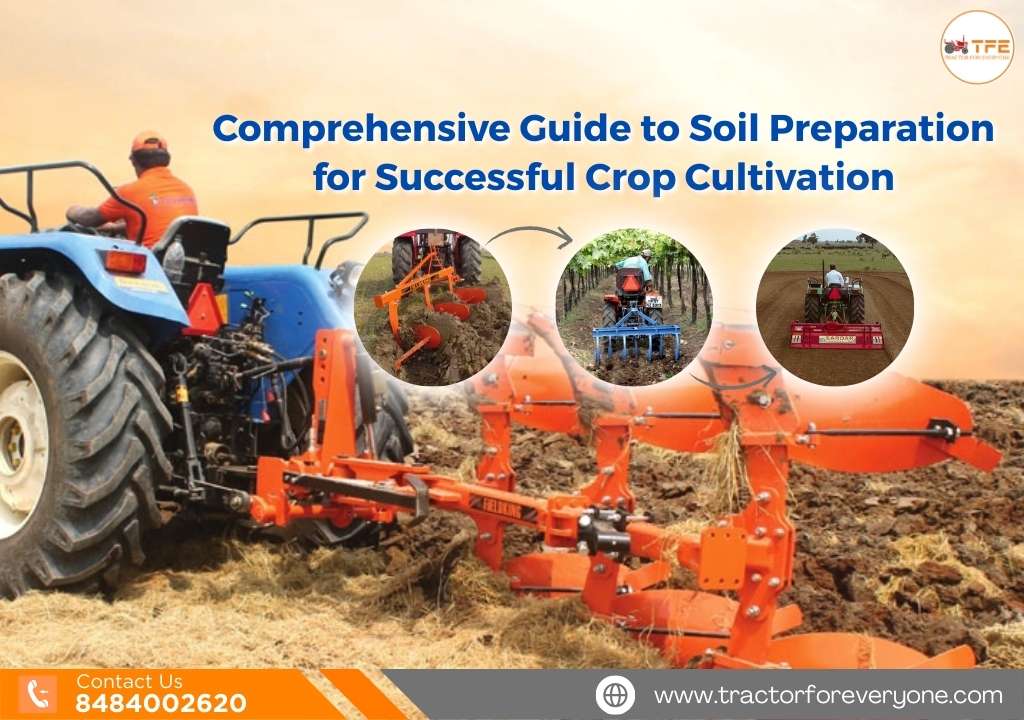
Comprehensive Guide to Soil Preparation for Successful Crop Cultivation
Soil preparation is a foundational aspect of successful agriculture, directly influencing crop establishment, growth, and yield. This comprehensive analysis examines the critical components of soil preparation, from understanding soil properties to implementing various tillage methods, highlighting both traditional and conservation approaches that contribute to sustainable agricultural practices.
Soil is the backbone of agriculture, comprising a complex mixture of biotic and abiotic components that support plant growth. Before implementing any cultivation practices, understanding the soil profile and its characteristics is essential for effective agricultural management.
Soil Preparation for Agriculture: Methods, Objectives, and Best Practices
Soil Types and Composition
Agricultural soils typically fall into three main categories: sandy, clayey, and loamy soils. Among these, loamy soil-a balanced mixture of sand, silt, and clay-is generally considered most suitable for farming due to its optimal structure and nutrient retention properties. The composition of soil includes minerals, decaying organic matter, humus, microorganisms, worms, and elements like water and air that collectively contribute to soil fertility.
Characteristics of Ideal Agricultural Soil
An ideal soil for agriculture demonstrates several key characteristics that optimize plant growth and development. These include good water holding capacity, proper aeration, appropriate texture or consistency, balanced pH levels, and richness in both micro and macronutrients. However, most soils in their natural state rarely possess all these ideal properties, necessitating preparation before cultivation to enhance growing conditions.
Objectives of Land Preparation
Land preparation involves manipulating the soil to create conditions favorable for crop establishment and growth. The process serves multiple critical functions that directly impact agricultural productivity.
1. Primary Objectives
The fundamental goals of land preparation include preparing seed beds that facilitate seed germination, controlling competing weeds, aerating soil to improve root penetration, and mixing in amendments to enhance soil fertility. These operations aim to create an environment where crop roots can easily penetrate the soil and access essential nutrients and water.
2. Soil Structure and Seedbed Preparation
Proper tillage decreases soil cloud size to ensure good seed-soil contact, which is vital for successful plant establishment. This process also helps manage soil moisture by facilitating both water infiltration during dry periods and drainage during wet conditions, creating a balanced environment for root development.
3. Weed, Pest, and Residue Management
Land preparation assists in controlling weeds by uprooting them before they compete with crops for resources. Additionally, tillage can help control or destroy insects, their eggs, larvae, and breeding places, reducing potential pest pressure during the growing season. The process also provides options for managing plant residue-either by incorporating it into the soil to enhance organic matter content or leaving it on the surface to protect against erosion.
Methods of Soil Preparation
Agricultural soil preparation typically follows a sequence of operations designed to transform the field into an optimal growing environment. The specific methods employed depend on factors such as existing soil conditions, crop requirements, available equipment, and environmental considerations.
Ploughing (Primary Tillage)
Ploughing represents the initial and deepest soil disturbance in conventional agriculture. This operation involves loosening and turning the soil, which improves aeration and allows roots to penetrate more easily. The process also facilitates the growth of beneficial microorganisms and earthworms that further improve soil structure and add humus through organic matter decomposition. Primary tillage opens new fields or prepares land after the previous harvest, typically requiring sufficient soil moisture to allow effective ploughing while providing reasonable traction.
Harrowing (Secondary Tillage)
Following primary tillage, harrowing breaks down larger soil clumps into smaller particles, creating a finer texture that supports better seed-to-soil contact and easier root penetration. This secondary ploughing smooths out the soil surface and eliminates large clumps or ridges that might impede uniform crop growth. The resulting soil environment provides improved conditions for germination and early seedling development.
Levelling
Land levelling creates a uniform plane surface across the field, which is particularly important for efficient water management. A level field ensures even water distribution during irrigation, prevents waterlogging in low spots, and facilitates proper drainage. This operation can be crucial for crops with specific water requirements and helps optimize resource use efficiency.
Soil Amendment and Fertilization
Most soils benefit from the addition of organic matter and nutrients before planting. This step typically involves incorporating compost, fertilizers, and other amendments to improve both soil structure and nutrient content. In plantation agriculture, more intensive preparation might include mixing organic material with soil from planting holes to enhance root zone conditions.
Types of Tillage Systems
Agricultural tillage systems vary in intensity, depth, and approach, each offering distinct advantages depending on the specific farming context and objectives.
Primary Tillage
Primary tillage represents the initial, deeper soil working that follows harvest or precedes a new growing season. Implementation typically involves mould-board ploughs or disc ploughs, with the latter preferred in hard, rocky, or root-filled areas due to their ability to navigate obstacles while requiring less power. This operation aims to break hardpan layers, incorporate crop residues, control perennial weeds, and create the foundation for subsequent seedbed preparation.
Secondary Tillage
Secondary tillage follows primary operations and focuses on creating optimal seedbed conditions. The primary purpose is to restrict water movement from surface layers, refine soil structure, and prepare the immediate environment for seed placement. This shallower tillage creates finer soil particles and a more uniform surface for planting operations.
Conservation Tillage Approaches
Conservation tillage represents a shift toward minimizing soil disturbance while maintaining productivity. This approach includes no-till, strip till, ridge till, and mulch till systems, all of which aim to maintain plant residues on at least 30% of the soil surface after tillage activities. These systems can reduce tillage passes by 40% or more compared to conventional practices, offering significant environmental and economic benefits.
Conservation tillage methods reduce carbon dioxide and greenhouse gas emissions, decrease reliance on farm machinery, and lower fuel and labor costs. Additionally, these practices have demonstrated benefits for soil health, reduced runoff, and limited erosion, contributing to the overall sustainability of agricultural systems.
Also Read: Summer Ploughing: A Smart Farming Practice for Higher Yields
Step-by-Step Land Preparation Process
Effective land preparation follows a systematic sequence that transforms raw land into a fertile seedbed ready for planting. The process typically includes five essential steps that build upon each other to create optimal growing conditions.
Clearing and Weeding
The initial step involves removing existing vegetation, rocks, and debris from the field. This clearing process eliminates competition for nutrients and water while providing a clean slate for subsequent operations. Thorough weed removal is particularly important as weeds left before planting will continue to grow and compete with crops for critical resources.
Pre-irrigation
Applying water before tillage helps soften the soil, making subsequent operations more efficient and effective. Pre-irrigation can be especially important in harder soils or those with compacted layers, as adequate moisture enables more thorough soil working without excessive power requirements.
Primary Ploughing or Tilling
The first major soil working opens the soil profile, creating improved aeration and promoting the growth of beneficial microorganisms that enhance soil fertility. This operation, often called primary tillage, breaks compacted soil layers and provides the foundation for a well-structured root zone.
Harrowing
Secondary ploughing or harrowing further refines soil structure by breaking down large clouds into smaller particles. This process creates a finer soil texture that facilitates root penetration and improves seed-to-soil contact during planting, supporting better germination and establishment.
Levelling
The final preparation step involves smoothing and grading the land to create a uniform surface. Proper levelling ensures even water distribution, prevents pooling in low areas, and creates consistent conditions across the field for uniform crop emergence and growth.
Planning Considerations for New Agricultural Establishments
When establishing new agricultural enterprises, particularly perennial crops like date plantations, additional planning considerations become critical to long-term success.
Critical Planning Factors
Successful establishment requires consideration of multiple factors, including water availability and quality, field selection criteria, mechanical operations, chemical amendments for soil improvement, necessary tools and equipment, labor requirements, irrigation system design, and financial resources. Comprehensive planning addresses these elements before implementation to avoid unnecessary delays or complications.
Water Availability and Management
Water represents a fundamental requirement for sustainable agriculture. When selecting land for development, the sustainability of water sources must be carefully evaluated, as crops like date palms require substantial quantities for optimal growth. Water quality, accessibility, and long-term availability should all factor into site selection decisions.
Hole Preparation for Plantation Crops
For perennial crops like date palms, individual planting hole preparation takes on heightened importance. Recommendations may include preparing holes of specific dimensions (e.g., 1 cubic meter) and mixing the excavated soil with organic materials and amendments like gypsum to create an optimal growing environment. This targeted approach enhances the immediate root zone environment for young plants.
Conclusion
Soil preparation represents a fundamental aspect of successful agriculture, laying the foundation for crop establishment, growth, and productivity. The methods employed-from traditional ploughing and harrowing to conservation approaches that minimize disturbance-must be tailored to specific soil conditions, crop requirements, and environmental contexts. Proper soil preparation improves aeration, nutrient availability, water management, and weed control while creating an environment conducive to root development and overall plant health.
As agricultural systems continue to evolve, balancing productivity with sustainability becomes increasingly important. Conservation tillage approaches offer promising alternatives that maintain yields while reducing environmental impacts and potentially lowering production costs. Regardless of the specific methods employed, thoughtful soil preparation remains essential to agricultural success, supporting both current productivity and long-term soil health.
Frequently Asked Questions (FAQs):
1. How does soil pH impact soil preparation for different crops?
Ans: Soil pH affects nutrient availability and microbial activity. Most crops thrive at pH 6.0–7.5, so testing and adjusting pH with lime (to raise) or sulfur (to lower) before planting ensures optimal nutrient uptake and root development.
2. What are the benefits of using green manures in soil preparation?
Ans: Green manures, such as clover or mustard, add organic matter, fix nitrogen, and improve soil structure. When ploughed under, they decompose and release nutrients, enhancing soil fertility and suppressing weeds.
3. How does mulching complement soil preparation?
Ans: Mulching after soil preparation conserves moisture, regulates temperature, and reduces weed growth. Organic mulches like straw or compost also gradually break down, enriching the soil with nutrients over time.
4. What are the risks of over-tilling the soil?
Ans: Over-tilling can destroy soil structure, reduce organic matter, and increase erosion risk. It may also disrupt beneficial soil organisms and lead to compaction in the long term, harming crop productivity.
5. How can small-scale farmers prepare soil efficiently without heavy machinery?
Ans: Smallholders can use hand tools like hoes, spades, and forks for tillage. Raised beds, no-till gardening, and composting are effective low-tech methods that improve soil health and productivity on small plots.
6. What role do earthworms play in soil preparation?
Ans: Earthworms naturally aerate the soil, improve drainage, and break down organic matter. Encouraging earthworm activity through organic amendments enhances soil fertility and structure without extra tillage.
7. How does soil preparation differ for perennial versus annual crops?
Ans: Perennials require deeper, more thorough preparation to establish long-term root systems, while annuals benefit from finer, shallower seedbeds for quick germination. Soil amendments for perennials should focus on long-term fertility.
8. What are the advantages of cover cropping in soil preparation?
Ans: Cover crops protect soil from erosion, suppress weeds, and add organic matter. When incorporated, they improve soil structure and nutrient content, supporting healthier subsequent crops.
9. How can farmers test soil quality before preparation?
Ans: Farmers can use soil test kits or send samples to labs to check pH, nutrient levels, and texture. This information guides appropriate amendments and tillage methods for optimal crop growth.
10. What are some eco-friendly alternatives to chemical fertilizers in soil preparation?
Ans: Organic options include compost, manure, bone meal, and biofertilizers. These improve soil health, support beneficial microbes, and reduce chemical runoff, making farming more sustainable.
Write a Comment
Popular Blogs View All
-
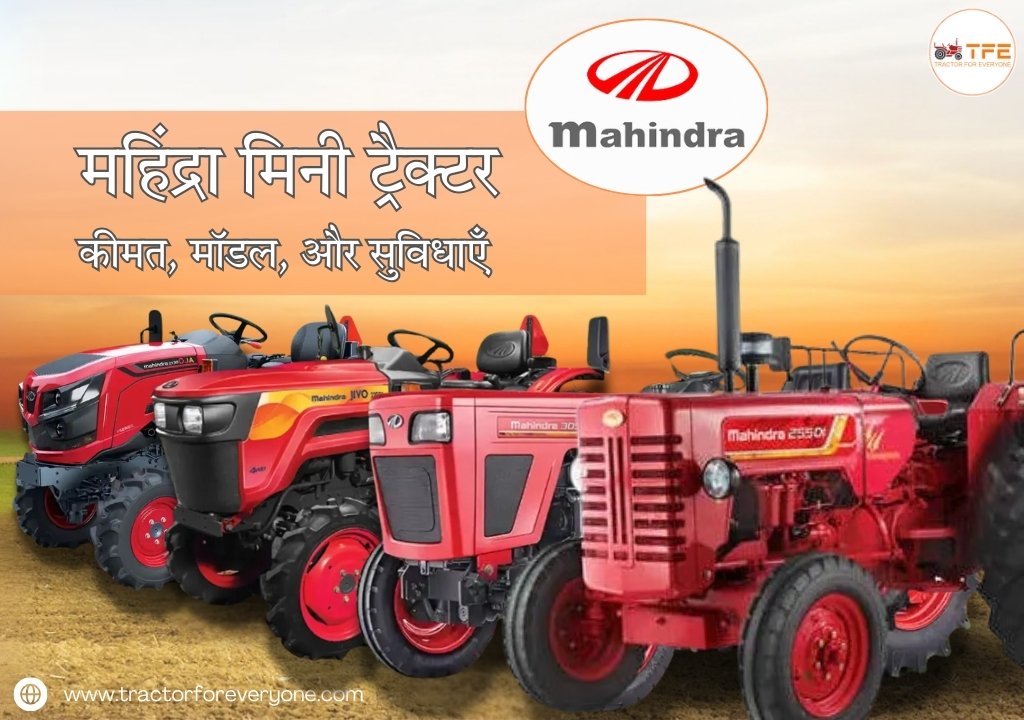
महिंद्रा मिनी ट्रैक्टर - कीमत, मॉडल, और सुविधाएँ
02/18/2025, POSTED BY ADMIN -

Swaraj Price 2025: Latest Swaraj Tractor Price List and On-Road Rates in India
07/24/2025, POSTED BY ADMIN -

Best Tractors in India 2025: Top 10 Picks for Every Farm Size
05/29/2025, POSTED BY ADMIN
Popular Video View All
-
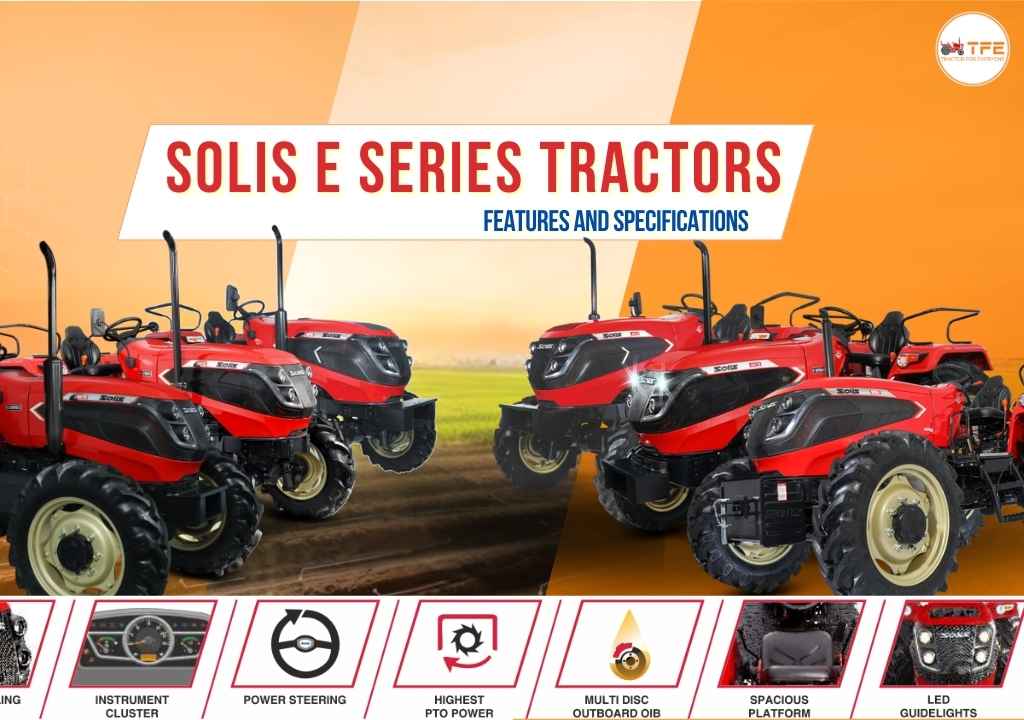
5 Things You Need to Know Before Buying a Solis E Series Tractor
05/17/2025, POSTED BY ADMIN -
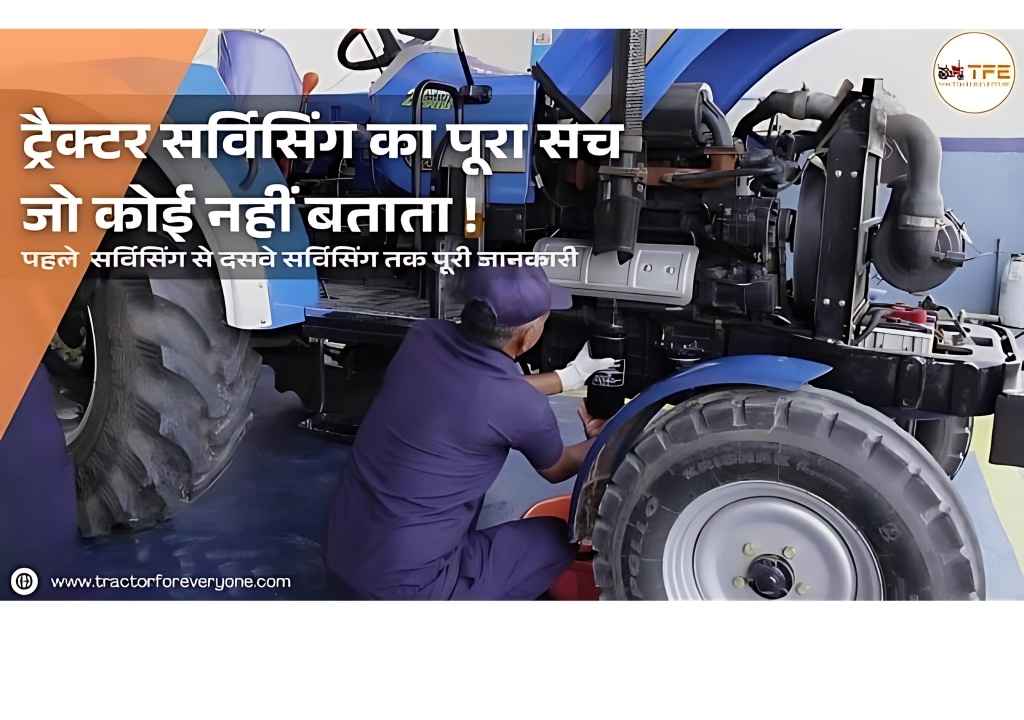
The whole truth about tractor servicing which no one tells!
05/17/2025, POSTED BY ADMIN -
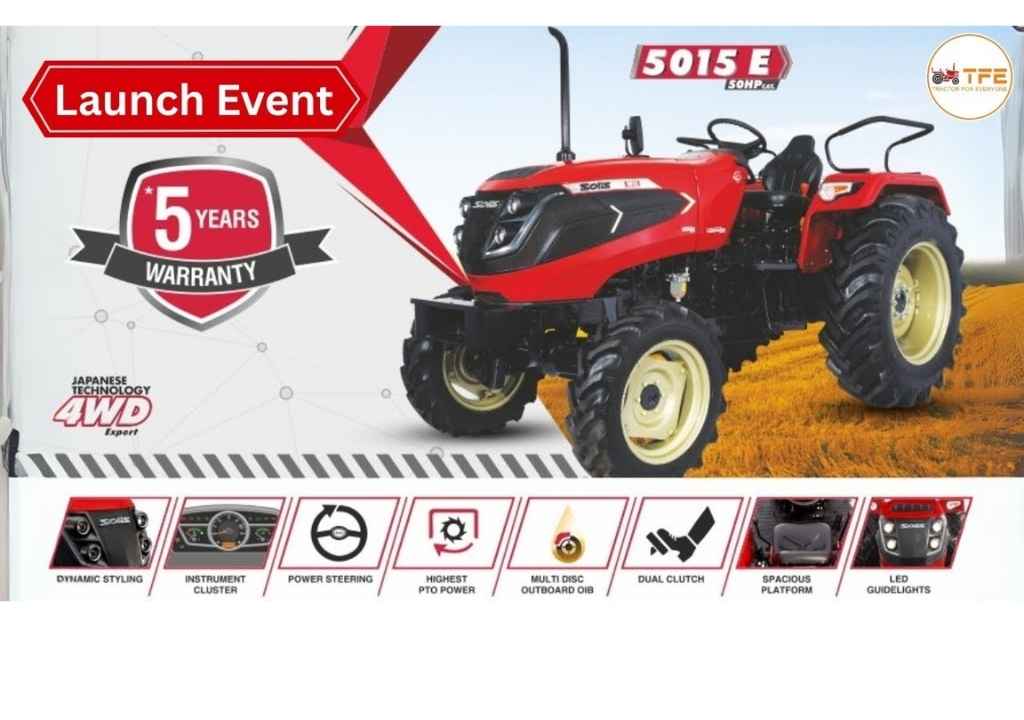
Solis Tractors Live Event | Solis Hybrid 5015 Tractor Launch
05/17/2025, POSTED BY ADMIN

